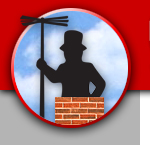
CONTACT US
| < Go Back to the List of Headlines |
Fireplace Anatomy 101 |
1/12/2017 |
| Your fireplace is undoubtedly a prominent fixture in your home. You decorate it for the holidays. You use it to keep warm throughout the winter. If you follow along with us on Facebook and Twitter, you may have even used some of our tips to cook a unique dinner or dessert over the fire. It’s a vital piece of your life!
But how often do you stop to consider how your fireplace works? Do you understand the ins and outs of its functions? Do you even care to know (hint: you should)? For our first blog entry of the new year, we are discussing the basic elements of fireplace anatomy: FoundationJust like the furthest most bottom layer of your home, all fireplaces begin with a foundation. The foundation is responsible for supporting the hefty weight of the materials that comprise the fireplace and chimney. As a result, the foundation is usually made up of a thick slab of concrete.Ash DumpThis chamber provides a space for the ashes of burned logs to go so that they do not remain sitting in the firebox, making cleanup after each burning session a little bit more manageable.HearthThe hearth of your fireplace is the platform which burning wood sits upon. As a result, this space must be constructed of flame and heat resistant material, such as brick or strong tile.FireboxSitting directly on top of the hearth, the firebox is the chamber within which your fire will burn. Like the hearth, it is made of heat resistant materials, like firebrick or ceramic.LintelThe lintel is located at the top portion of the opening of your fireplace. Its main job is to bear the weight of the chimney’s upper components that would otherwise not be properly enforced due to the cutout for your firebox.DamperThe damper is a small lever or gate that can be closed when your fireplace is not in use. Doing so will prevent unwanted air from entering your home through your fireplace.Smoke ShelfThe smoke shelf is a tiny platform at the base of your chimney that catches any falling water or debris that may enter through the chimney opening.Smoke ChamberThe smoke chamber is designed to help smoke from burning wood rise upward and out of the chimney instead of backing up into your home.FlueThe flue is the actual tube portion of your chimney that smoke travels through to reach upward and out of your home.Mortar CrownServing as the cap of your chimney, the mortar crown’s main purpose is to prevent exterior elements (weather, animals, etc.) from entering your chimney, thus getting into your home. |
